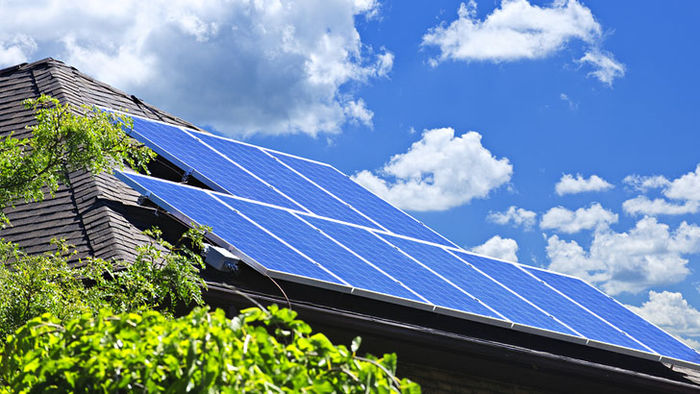How long does it take for a solar power system to pay off?
By Susan Hely
Which country managed to produce 50% of its electricity needs from solar over two consecutive days recently?
The answer might surprise you because it isn't a particularly sunny country. It's Germany.
Germany has thrown its weight behind solar power and its plants produced 22 gigawatts of electricity - equal to about 20 nuclear power stations at full capacity - through the sunny middle hours of two consecutive days, a Friday (workday) and Saturday (most factories closed).
As it winds back reliance on nuclear power, Germany is proving solar can be a reliable major source of power.
What is the sunny country Australia doing about solar? Well, we're a long way behind Germany.
Solar panels sit on about 750,000 of Australia's 8 million homes. That number is expected to increase to 1 million homes in a year, according to Ray Wills, the Sustainable Energy Association's chief adviser.
Solar is compelling because electricity prices are rising and the price of solar systems is plummeting. Government incentives such as feed-in tariffs, where households are paid a price premium for power sent to the grid, have helped boost the take-up of solar. Feed-in tariffs have helped increase the average size of solar systems to 2.84 kilowatts, says Wills.
But NSW, Queensland and Western Australia have cut feed-in tariffs and Victoria will reduce its subsidy in coming months. Tasmania and South Australia have left their tariffs intact.
Does it make financial sense to add solar to your home? The price of a good solar system, fully installed, has halved in the past few years. Energy Matters is selling a 4.2kW crystalline silicon system, which would supply the power needs of a four-person family for around $9500. Two years ago it would have cost $15,000, four years ago $20,000 and eight, $30,000.
It isn't the cheapest system. I recently saw a 1.5kW system advertised on a discount online shopping service for less than $100 - an offer that looked too good to be true. There were extra charges for installing and inverters.
Will prices fall further? Yes, a little, but not as sharply as they have done, says Nick Brass, general manager of retail sales at Energy Matters. He says the high Australian dollar and an oversupply of European solar systems has meant a lot of dumping of solar systems in Australia.
"All indications are that we are going to see a levelling-off of costs," says Brass.
Payback time
How long does it take for the solar system to pay for itself? Nick Brass of Energy Matters estimates the time at about six years for a standard household using 18kWh to 20kWh of electricity a day.
If the house receives 4-4 half hours of sun a day, a 3kW system costing about $7000 will provide roughly 75percent of energy needs. This will be worth around $1200 a year. And you can export excess power to the grid.
With electricity prices rising sharply, the payoff may come in less than six years. The price includes the discount for the solar credits that come from renewable energy targets.
Most solar systems come with a 25-year guarantee, - you are buying 25 years of electricity supply.
So it's important to buy your system from an established provider with a sound business which will still be around in 25 years.
Get stories like this in our newsletters.



